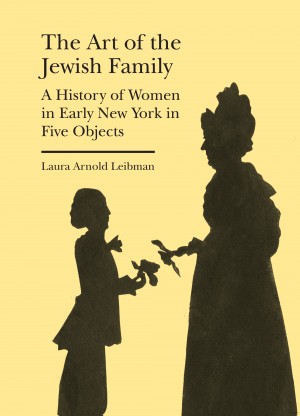The Book Rescuer is both informational and inspiring, explaining to young readers how one imaginative American Jew named Aaron Lansky determined that he would rescue the Yiddish language and make it a living testament to the dwindling culture of millions of European Jews. Lansky’s combination of persistence and innovative thinking allowed him to carry the remnants of a culture and language, from basements and dumpsters to an outstanding research institution built to house them and open their pages to the world.
Macy begins her narrative by inviting the reader to “Kum aher. Sit down. I want to tell you a story.” At first, it may seem as if romanticized family memories will predominate as we learn that Lansky’s immigrant grandmother was told by her brother to toss her suitcase full of useless items from the past into the Hudson River. It soon becomes clear that this poignant anecdote is only the beginning, as the woman’s grandson retrieves the culture lost in that suitcase; Macy and Innerst emphasize the ordinary nature of this “all-American boy” growing up in a small Massachusetts town. Although the cultural relics depicted in Innerst’s portrait may be dated the vision of childhood as a time of unlimited curiosity is not. Soon Aaron’s love of reading and sense of connection to his family’s past becomes a consuming passion.
Children will identify with the obstacles which Lansky confronts in the form of skeptical establishment figures who have little patience for his mission. When he calls on “the leaders of the biggest Jewish organizations in the country” to warn them that Yiddish books are being tossed in the trash by those who no longer see a use for them, the response he receives would discourage anyone less focused.
Innerst describes in an “Illustrator’s Note” how the influence of Chagall helped him bring Jewish culture to life. Some of the book’s scenes are direct homages to that artist while others represent a subtle response to his vision. One incredible two-page spread shows a stylized model of the Jewish world in all its multiple settings, from shtetl buildings to the palm trees of the Middle East. The “ground” on which these features stand is a collage of pages filled with Yiddish print, forming a foundation for the world above it. Innerst’s artwork is a complex interplay of Chagall’s world and that of late twentieth-century America. He captures the transition between generations, as the book collector’s tremendous energy meets the quiet dignity of older Jews ready to pass on their tradition. One picture shows two elderly hands giving a Yiddish book to Lansky’s youthful ones; the book is entitled symbolically chai (life). The silence of this image is followed by a much different one, featuring the vibrant activity in the Yiddish Book Center where Lansky’s dream has become a reality.
The Book Rescuer is highly recommended not only for children but for older readers who are inspired by the revival of Yiddish culture, as well. It includes an “Afterword” by Aaron Lansky, an “Author’s Note,” an “Illustrator’s Note,” a Yiddish glossary, and a list of additional sources.
Emily Schneider writes about literature, feminism, and culture for Tablet, The Forward, The Horn Book, and other publications, and writes about children’s books on her blog. She has a Ph.D. in Romance Languages and Literatures.




